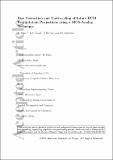Por favor, use este identificador para citar o enlazar a este item:
http://hdl.handle.net/10261/170769COMPARTIR / EXPORTAR:
 SHARE SHARE
 CORE
BASE CORE
BASE
|
|
| Visualizar otros formatos: MARC | Dublin Core | RDF | ORE | MODS | METS | DIDL | DATACITE | |

| Título: | Bias correction and downscaling of future RCM precipitation projections using a MOS-Analog technique |
Autor: | Turco, Marco; Llasat, M. C.; Gutiérrez, José M. CSIC ORCID ; Herrera, Sixto CSIC ORCID CVN | Fecha de publicación: | 2017 | Editor: | American Geophysical Union | Citación: | Journal of Geophysical Research: Atmospheres 122(5): 2631-2648 (2017) | Resumen: | In this study we assess the suitability of a recently introduced analog-based Model Output Statistics (MOS) downscaling method (referred to as MOS-Analog) for climate change studies and compare the results with a quantile mapping bias correction method. To this aim, we focus on Spain and consider daily precipitation output from an ensemble of Regional Climate Models provided by the ENSEMBLES project. The reanalysis-driven Regional Climate Model (RCM) data provide the historical data (with day-to-day correspondence with observations induced by the forcing boundary conditions) to conduct the analog search of the control (20C3M) and future (A1B) global climate model (GCM)-driven RCM values. First, we show that the MOS-Analog method outperforms the raw RCM output in the control 20C3M scenario (period 1971–2000) for all considered regions and precipitation indices, although for the worst-performing models the method is less effective. Second, we show that the MOS-Analog method broadly preserves the original RCM climate change signal for different future periods (2011–2040, 2041–2070, 2071–2100), except for those indices related to extreme precipitation. This could be explained by the limitation of the analog method to extrapolate unobserved precipitation records. These results suggest that the MOS-Analog is a spatially consistent alternative to standard bias correction methods, although the limitation for extreme values should be taken with caution in cases where this aspect is relevant for the problem. | Versión del editor: | https://doi.org/10.1002/2016JD025724 | URI: | http://hdl.handle.net/10261/170769 | DOI: | 10.1002/2016JD025724 | Identificadores: | doi: 10.1002/2016JD025724 e-issn: 2169-8996 issn: 2169-897X |
| Aparece en las colecciones: | (IFCA) Artículos |
Ficheros en este ítem:
| Fichero | Descripción | Tamaño | Formato | |
|---|---|---|---|---|
| biasaccepted.pdf | 10,13 MB | Adobe PDF |  Visualizar/Abrir |
CORE Recommender
SCOPUSTM
Citations
54
checked on 20-abr-2024
WEB OF SCIENCETM
Citations
48
checked on 23-feb-2024
Page view(s)
435
checked on 24-abr-2024
Download(s)
381
checked on 24-abr-2024
Google ScholarTM
Check
Altmetric
Altmetric
NOTA: Los ítems de Digital.CSIC están protegidos por copyright, con todos los derechos reservados, a menos que se indique lo contrario.
